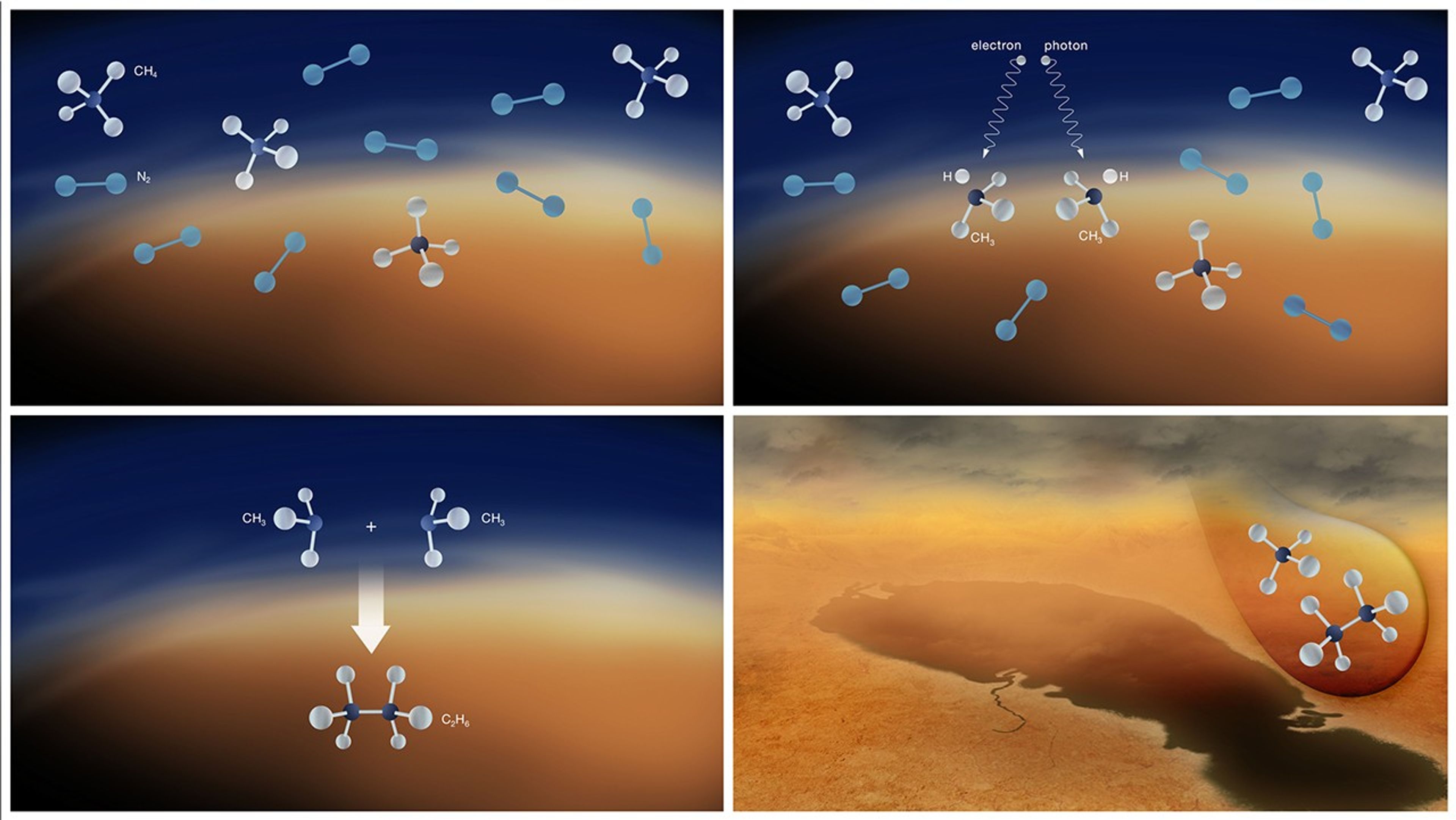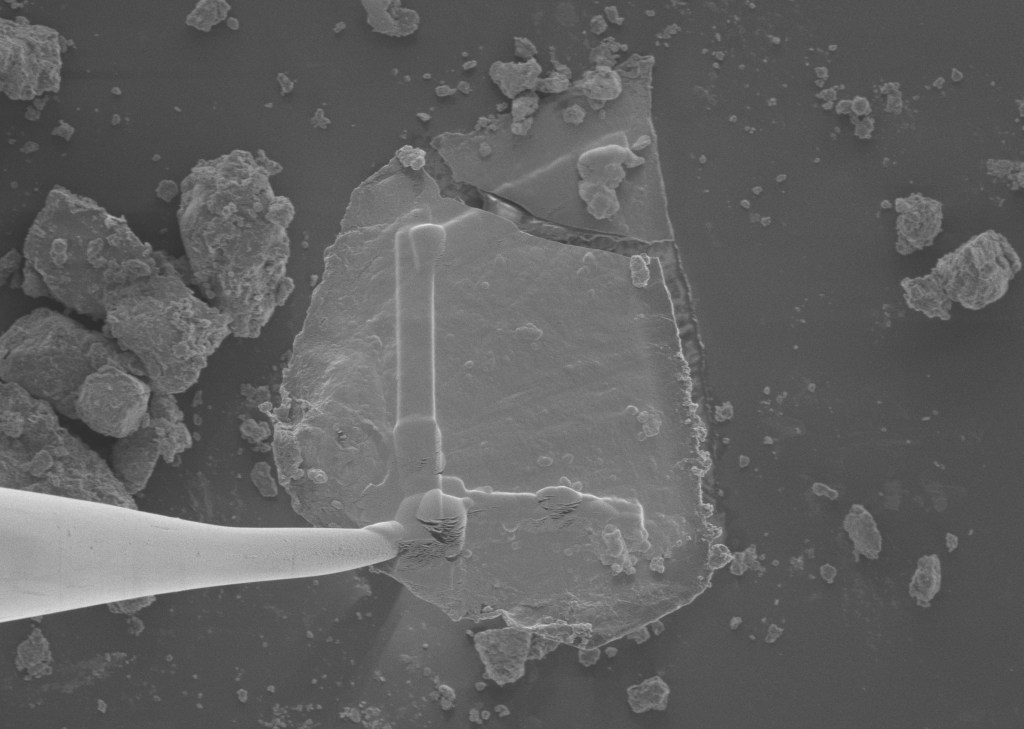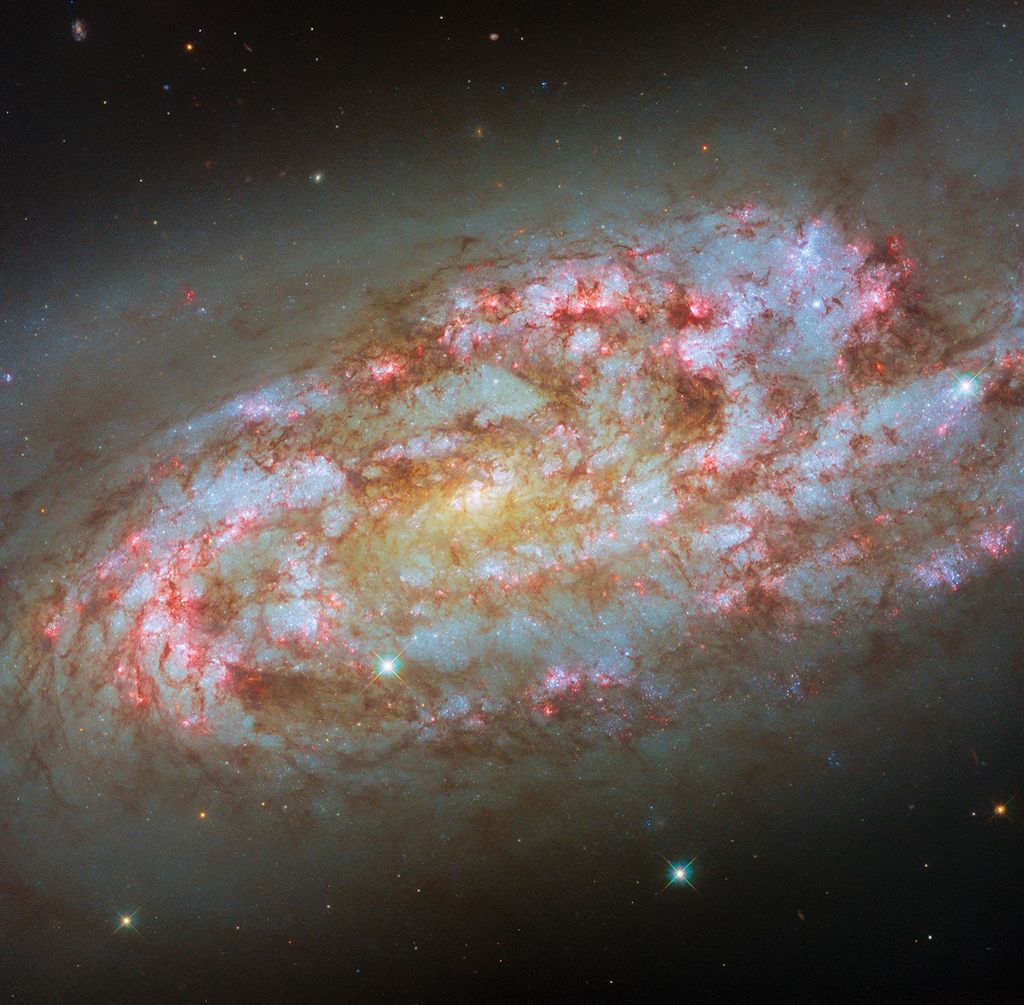1 min read
Titan (Webb and Keck Image)

These images of Titan were taken by NASA’s James Webb Space Telescope on July 11, 2023 (top row) and the ground-based W.M. Keck Observatories on July 14, 2023 (bottom row). They show methane clouds (denoted by the white arrows) appearing at different altitudes in Titan’s northern hemisphere.
On the left side are representative-color images from both telescopes. In the Webb image light at 1.4 microns is colored blue, 1.5 microns is green, and 2.0 microns is red (filters F140M, F150W, and F200W, respectively). In the Keck image light at 2.13 microns is colored blue, 2.12 microns is green, and 2.06 microns is red (H2 1-0, Kp, and He1b, respectively).
In the middle column are single-wavelength images taken by Webb and Keck at 2.12 microns. This wavelength is sensitive to emission from Titan’s lower troposphere. The rightmost images show emission at 1.64 microns (Webb) and 2.17 microns (Keck), which favor higher altitudes, in Titan’s upper troposphere and stratosphere (an atmospheric layer above the troposphere). It demonstrates that the clouds are seen at higher altitudes on July 14 than earlier on July 11, indicative of upward motion.
About the Data
- Data DescriptionData DescriptionProposal: A description of the observations, their scientific justification, and the links to the data available in the science archive.
Science Team: The astronomers who planned the observations and analyzed the data. "PI" refers to the Principal Investigator.This Webb portion of this image was created from data from proposal: 1251 (C. Nixon). Image processing: Alyssa Pagan (STScI).
- InstrumentInstrumentThe science instrument used to produce the data.NIRCam, NIRC2
- Exposure DatesExposure DatesThe date(s) that the telescope made its observations and the total exposure time.11 July 2024, 14 July 2024
- FiltersFiltersThe camera filters that were used in the science observations.NIRCam: F140M, F150W, F200W NIRC2: F213N (H2 1-0), F212N (Kp), F206N (He1b)
- Object NameObject NameA name or catalog number that astronomers use to identify an astronomical object.Titan
- Object DescriptionObject DescriptionThe type of astronomical object.Saturn satellite
- Release DateMay 14, 2025
- Science ReleaseWebb’s Titan Forecast: Partly Cloudy With Occasional Methane Showers
- CreditImage: NASA, ESA, CSA, STScI, Keck Observatory
Downloads

These images are a composite of separate exposures acquired by the James Webb Space Telescope and Keck Observatroy using the NIRCam and NIRC2 instruments respectively. Several filters were used to sample specific wavelength ranges. The color results from assigning different hues (colors) to each monochromatic (grayscale) image associated with an individual filter. In this case, the assigned colors are: Webb> Blue: F140M, Green: F150W, Red: F200W Keck> Blue: F213N (H2 1-0), Green: F212N (Kp), Red: F206N (He1b)
Related Images & Videos

Chemistry in Titan's Atmosphere
This four-panel infographic demonstrates a key chemical process believed to occur in the atmosphere of Saturn’s moon Titan. 1) Titan has a thick, nitrogen (N 2 ) atmosphere that also contains methane (CH 4 ). 2) Molecules known as methyl radicals (CH 3 ) form when methane is...
Share
Details
Laura Betz
NASA’s Goddard Space Flight Center
Greenbelt, Maryland
laura.e.betz@nasa.gov
NASA, ESA, CSA, STScI, Keck Observatory































